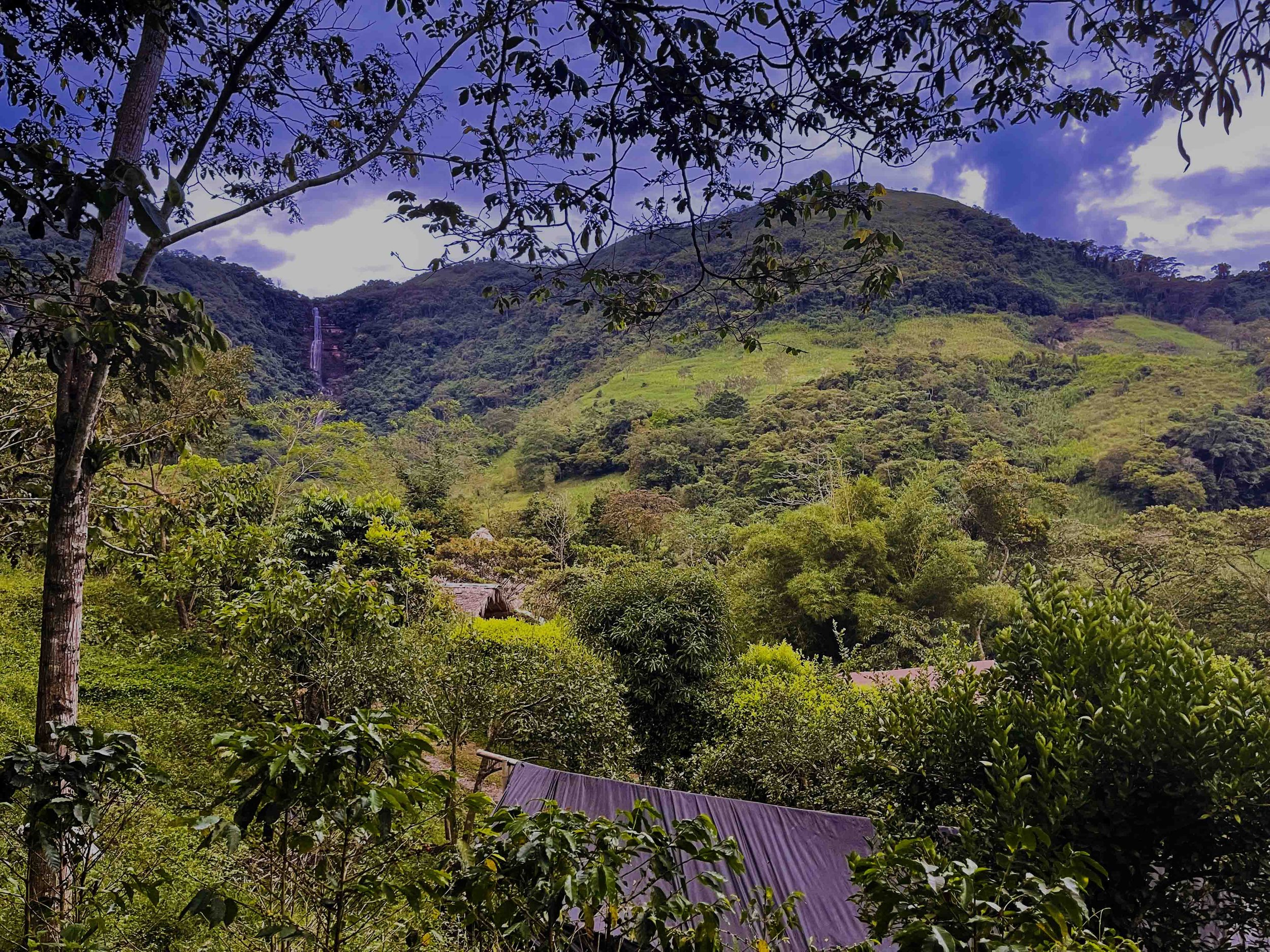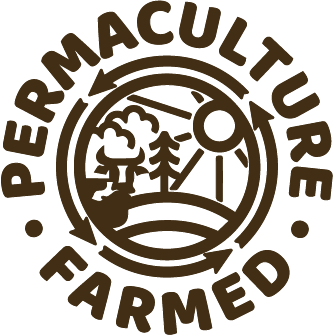
THIS IS WHERE OUR COFFEE IS GROWN

WELCOME TO OUR ECO-FINCA
Nestled in the serene surroundings of Santander, Colombia, our coffee is grown on a small eco-finca (eco-farm). This picturesque farm, owned and operated by Marlon and Paola Akasha, boasts a breathtaking location on the banks of the Rio Fonce, surrounded by lush greenery and even a nearby waterfall.
Unlike other coffee farms, this eco-finca is also a Permaculture School where individuals from around the world come to learn about sustainable farming practices that integrate land, resources, people, and the environment. By adopting permaculture principles, the farm strives to emulate the efficient, waste-free, and self-sustaining systems found in diverse natural ecosystems.
Freshly roasted coffee beans (front) and un-roasted beans (back).
crafted
by hand with love
Our 100% Arabica coffee beans are the embodiment of our commitment to ethical sourcing, sustainability, and exceptional taste. We take great pride in ensuring fair trade practices that empower farmers and their communities.
These beans are meticulously grown on our eco-finca using agroforestry practices, fostering a harmonious relationship between the coffee plants and the surrounding ecosystem. This approach not only results in a rich and flavorful cup of coffee but also promotes the preservation of biodiversity and environmental stewardship. With every sip, you can enjoy the exquisite taste of our coffee while actively supporting a sustainable and ethical coffee industry that values both people and the planet.
HOW DOES OUR COFFEE GO FROM BEAN TO CUP?
Coffee trees thrive in regions known as the "coffee belt" or the "coffee zone." These areas are typically located between the Tropics of Cancer and Capricorn. Colombia's unique climate fosters the growth of exceptional coffee, yielding some of the finest beans in the world.
When ripe, coffee beans turn red. The outer shell is removed to reveal the fresh green beans inside.
Coffee beans are typically dried on racks in a process known as "sun drying." After being harvested, the coffee cherries are first processed to remove the outer layers and expose the beans. These beans, still covered in a sticky mucilage, are spread out in thin layers on raised drying racks or screens, allowing air to circulate around them.
The racks are placed under the sun, where the natural heat and airflow aid in evaporating the moisture from the beans. Over a period of several days or weeks, depending on the weather conditions, the beans gradually dry and reach the desired moisture content. This traditional method of drying on racks helps develop the beans' flavor and prepares them for further processing.
Video courtesy of Cottonbro Studio
Coffee roasting is a meticulous process that transforms green beans into flavorful gems. Loaded into a roasting machine, the beans undergo chemical changes as heat is applied. They transition from yellow to cinnamon brown and eventually reach a desired deep brown or dark, oily appearance. After cooling, the beans are ready to be ground and brewed, capturing their unique flavors. Roasting is an art requiring expertise to achieve the perfect balance and desired profiles.

CULTIVATING BALANCE
Girls performing a traditional dance, balancing coffee cups in Zipaquirá, Cundinamarca, Colombia
Image courtesy of Cristhian Cabra
We are dedicated to growing the best coffee with the perfect balance, and it goes beyond exquisite flavors. Every cup contributes directly to our efforts in providing vital resources, training, and facilities to midwives and mothers in need. Together, through the perfect balance of exceptional coffee and empowering initiatives, we are making a positive difference in the lives of midwives, mothers, and their newborns.










